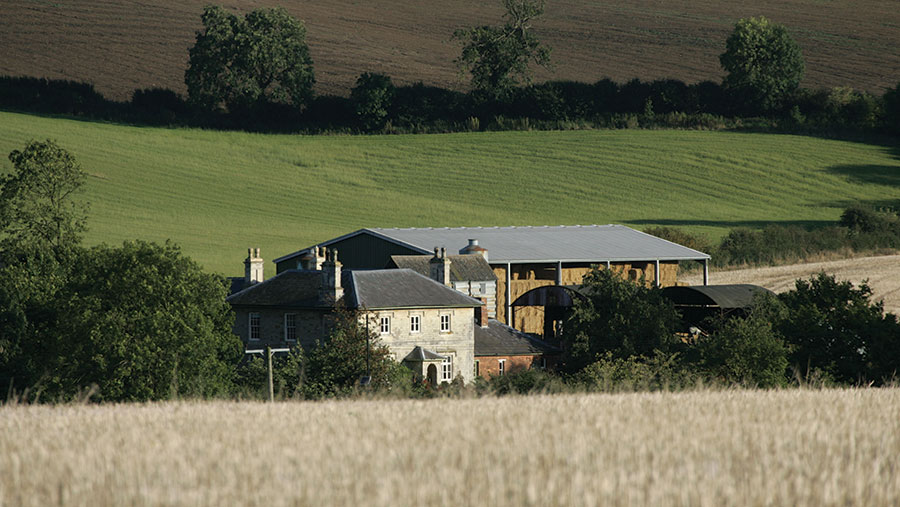Find out average farm rents where you live 2020
 © Tim Scrivener
© Tim Scrivener Farm rents across England were 3% higher year-on-year for farm business tenancy (FBT) and seasonal agreements in 2018-2019, according to latest government figures.
Defra’s report, released on Thursday (12 March 2020), includes the results from the 2018-19 Farm Business Survey.
It illustrates the gap between rents that tend to be higher for FBTs than full agricultural tenancy (FAT) agreements (also known as Agricultural Holdings Act tenancies).
See also: Agriculture Bill proposes significant changes to tenancies
Location-wise, values are higher in the east of England, the East Midlands and south-west England.
Across both FAT and FBT agreements, values were highest in the east of England and lowest in north-west England.
By farm type, lowland grazing livestock attracts the lowest rent values, with general cropping achieving the highest figures.
See the map for your area and read the rest of the report below.
Regional average rents by agreement type
FAT agreements
The average rent in 2018 was £69/acre, up marginally from £68/acre in 2017.
The East Midlands saw the largest decrease in average rents, down 4% to £78/acre, while the east of England saw the largest increase, up 5% to £102/acre.
Apart from lowland grazing livestock farms, all farm types saw an increase in average rent values.
General cropping farms saw the largest increase, up 5% to £89/acre, with dairy increasing by 4% to £83/acre. All other farm types saw little change.
The total area of land under these agreements fell by 3% to 3.3m acres.
FBT agreements
For FBT agreements, the average rent was £93/acre, 3% higher than the £91/acre of the previous survey.
Yorkshire and Humber saw the largest decrease, down 11% to £60/acre. Meanwhile, north-east England and the east of England both saw averages rise by 9% to £70/acre and £125/acre, respectively.
Rents for lowland grazing livestock farms on average were higher by 8% at £77/acre, and 6% higher at £103/acre on dairy farms.
No farm types saw a decrease in average rent and the total area of land under FBT agreements was 3.1m acres, up by 5%. FBT agreements now account for about 48% of all land in the tenanted sector in England.
Seasonal agreements
The average rent for seasonal agreements, which may be for any length of term less than 12 months, was £63/acre, up 3% from £62/acre.
Striking figures
Although seeing FBT rents at higher levels than FAT rents on similar land is expected, it is striking that the FBT rents are not as high as often quoted in the tender market, said George Dunn, chief executive of the Tenant Farmers Association (TFA).
This suggests there must be a considerable number of FBT agreements where rents are at more sensible levels than those publicised, he said, which should form part of the assessment of the open market level of rent during the review process.
“It is also important to bear in mind that these figures are now two years out of date,” said Mr Dunn.
“With the current pressures on agriculture – not least the appallingly bad backend in respect of the weather and uncertainty about our future policy and trading environment – the TFA is anticipating room for rent reductions this year.”
Could rents be set to fall?
Richard King, partner and head of business research at consultant Andersons, said the shift from the Basic Payment Scheme (BPS) to the Environmental Land Management scheme could see average rental levels fall.
A guaranteed income from land in the form of BPS has historically elevated rents, as well as other inputs and contract farming agreement charges, he said.
In future, rental values will more closely align to land’s earnings potential, and relationships might need to be forged between occupant and owner to capture some long-term public good offerings.
There is likely to be a period of upheaval and adjustment over the next decade, said Mr King, until a new normal is found.
